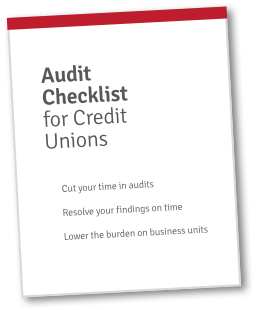To begin, let’s just say it: audits can be extraordinarily stressful. Mobilizing your experts, addressing the auditor’s queries, and meeting deadlines is a time-consuming responsibility with a lot of moving parts.
The Game of Risk: Dangers
Unfortunately, we’re not talking about the fun board game, Risk, brought to you by the masterminds at Hasbro. We’re talking about risk that costs time and money, and may result in regulatory enforcement. Here’s a taste:- Coordinating between internal resources, management, and inside and outside counsel requires very strong organizational tools. One wrong move or missed step opens the door to enforcement actions or a prolonged process with the regulatory board.
- Email is a convenient method of communication, but it comes with drawbacks. For example, if emails concern audit topics, entire email servers and histories are subject to legal discovery.
- Without a system that centralizes audit information, credit unions may compile documents that contradict one another. These contradictions could be in the same report, or they may be apparent only when examining past reports. When regulators see two (or more!) different answers to the same question, they see a red flag.
Approaches to Risk: Attitude
One question you’ll have to ask yourself is what is your tolerance for risk? The way you approach audits and exams, and the way you respond to a request for documents, determines a lot about what kind of risk mitigation solutions you’ll need.Low Risk Tolerance
If you like to run a very tight ship, you may be risk-averse. For example, if you miss something in an exam, or otherwise spark the ire of a regulating body you may want to follow up on a few things. Was there something that could be done about it? Could it have been prevented? Was the mistake a result of poor organization or communication? What’s at stake?In a tight ship, there are consequences. Heads may roll. Course correction is swift. You may consider any tools at your disposal to fix the problem and prevent further issues.
High Risk Tolerance
If you’re running a ship, but you also understand that water is a fickle medium for travel, then you might have a more go-with-the-flow attitude. You can probably deal with an increased level of risk, knowing that juggling risk is part of the cost of doing business.You may be slow to course-correct. You may not address audit findings, or respond at a leisurely pace. You can course-correct for larger problems.







